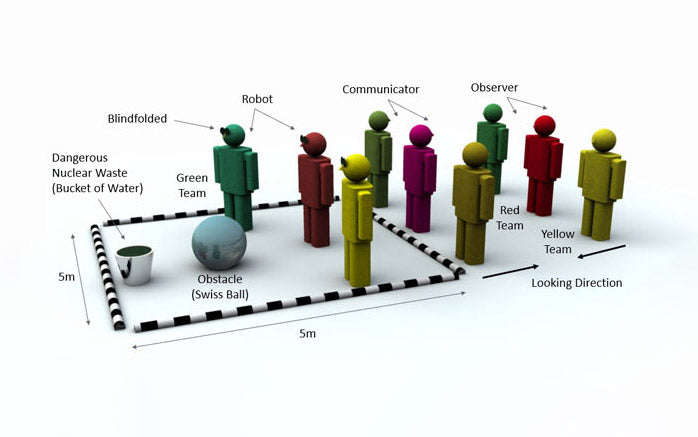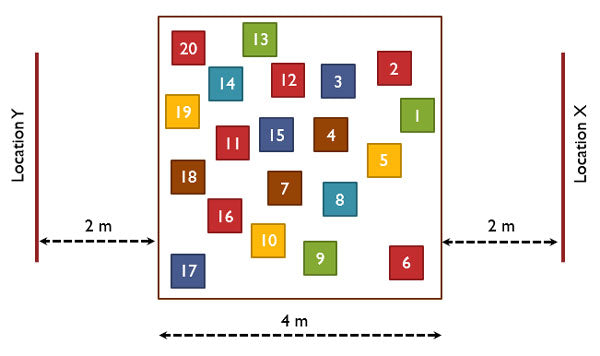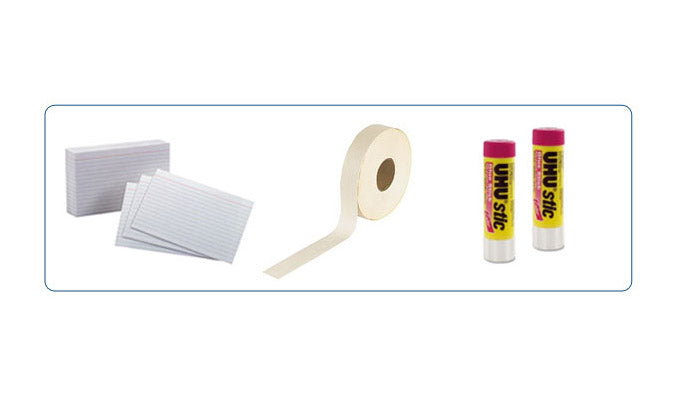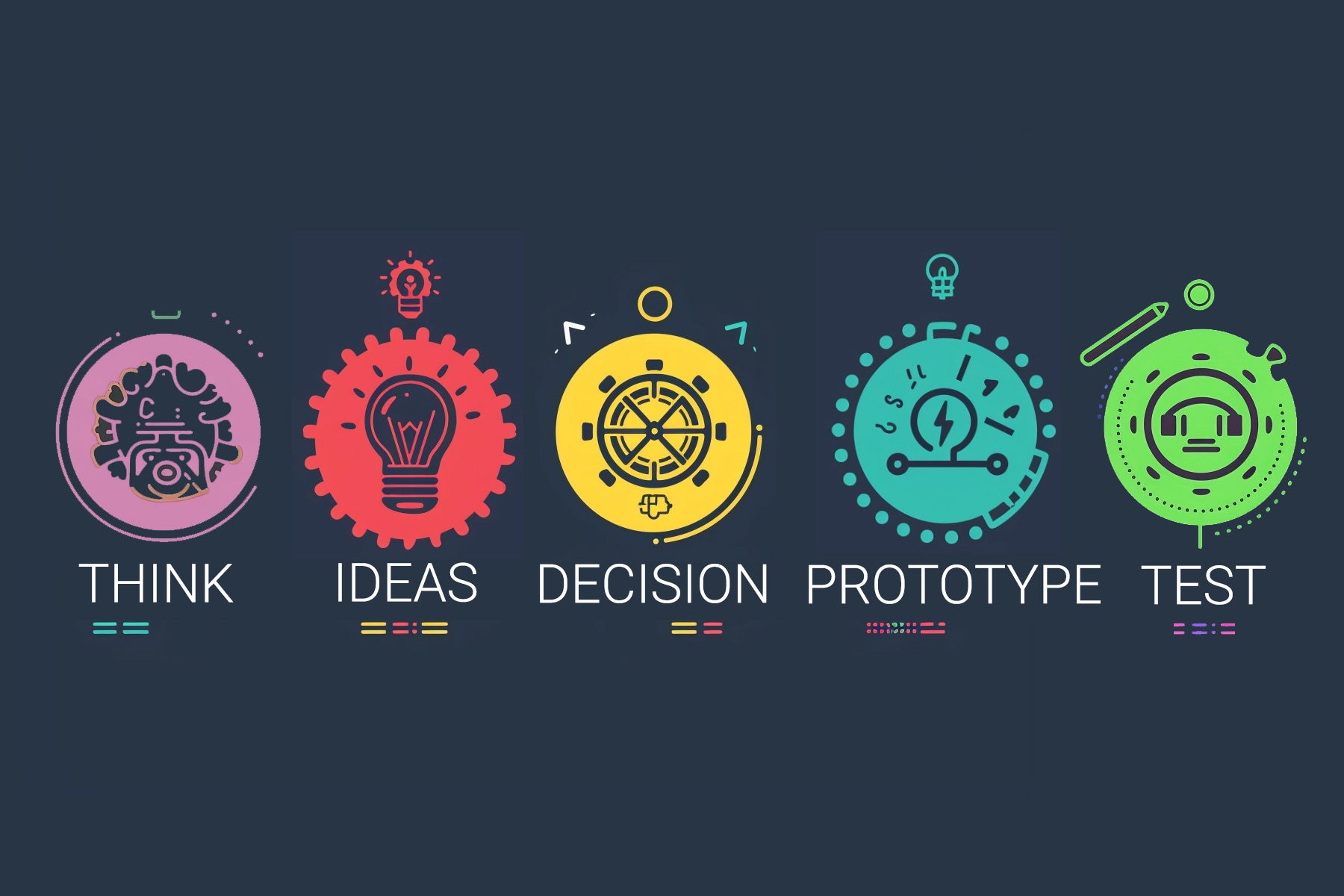Purpose
Agile project management was popularised by the tech industry and has its roots in Japanese companies such as Toyota, Honda and Fuji. There are many who think agile development can lead to efficient project management and as a result it remains a hot topic. The Scrum framework was then developed based on that in the 90s and has since gained momentum in a variety of technology and engineering companies.
The exercise shown here is a great tool to quickly and elegantly show what Scrum project management is about. Scrum has many amusing and somewhat unusual jargon, such as sprint, backlog, daily scrum, scrum master and so on. This engaging exercise can help you familiarise delegates with these jargons and make it easier to remember them.
Before going through the details of the exercise, here is a quick intro to Scrum. It is highly recommended that you familiarise yourself with the methodology using numerous guides that are available online. The overall aim of scrum is to indicate clearly what needs to be done, by whom it should be done and how this information should be updated periodically to make sure the whole team stays up-to-date, or ‘agile’ so to speak. These are the main components of scrum:
- Product Owner. This is a person in charge who has the authority to say what goes into the final product. This is formulated based on the end user’s interest.
- Backlog. This is a prioritised list of tasks and requirements for the final product. The product owner oversees this list.
- Sprint. A team must complete tasks from the backlog with a certain timeframe which is known as sprint. Typically, this is about two weeks, but it depends on the team’s needs.
- Daily Scrum. This is a daily meeting of teams to give progress updates. It is typically held in the same location, at the same time, time-boxed to 15 minutes and carried out while standing (it is also called Daily Stand-Ups).
- Retrospective. Each sprint is finalised with a review session to see what needs to be improved for the next sprint.
In this exercise, teams compete to retrieve a highly dangerous nuclear waste. There are three distinct roles based on the scrum framework. Teams score points for their performance and the winning team is acknowledged.
Objective
Work with your team of three to complete a given task using the scrum framework and, in the process, understand the requirements of each role in the context of project management.
What You Need
- A small bucket full of water, representing dangerous nuclear waste. Make sure it is not too heavy and can be easily picked up from the ground.
- Blindfolds, one per each team of three delegates
- Rope or long objects to create an area of 5m x 5m.
- A Swiss ball
Setup
- Mark up the area like the diagram shown above. Use the rope to create a box. This is the area where the Robots operate in. One side of this box represents the start line. If you have three teams, make the box about 5m x 5m.
- Divide the delegates to groups of three. If you have two delegates left, form a group with them yourself. If you have one delegate left, assign that person to participate with one of the groups.
- Explain that the objective of this exercise is that teams must compete to be the first to retrieve the highly dangerous nuclear waste and bring it back to safety—the start line. A bucket of water represents the nuclear waste.
- The team must use the scrum method to go through the task. Explain the scrum method to make sure they understand it.
- For this exercise, there are three roles in each group:
- Observer (O). They stand on one end of the area away from the box, but they can clearly see the box and the Robots. They will face the Communicators. They are not allowed to talk. Observers represent Scrum Product Owners.
- Communicator (C). Communicators stand next to the start line but face away from the box. They face the Observers but cannot see the Robots. They issue verbal commands to the Robots behind them. Communicators represent Scrum Masters.
- Robot (R). Robots are in the box and should remain in the box at all times. They stand on the start line, their backs to the Communicators. They are blindfolded and cannot see anything. Only the Robots can move. Other members must stay where they are. Robots represent Scrum Sprinters.
- If there are four delegates in a group (because of adding a leftover person), two delegates should be assigned to the role of Observer.
- Ask everyone to take up position.
- Once the Robots are in the box and are blindfolded, place the bucket of water into the box away from the Robots. Make it random.
- Keep the Swiss ball out of the box for time being.
- Explain that a penalty of a 10 seconds freeze is imposed when:
- A robot goes out of the box.
- Two robots bump into each other. Both robots receive the penalty.
- A Robot bumps into an obstacle such as the Swiss ball. When the Swiss ball is bumped into, it is likely to move to a new location. Keep it where it ends, representing a change to the environment. If it went out of the box, put it back in the box in a random location. If the ball rolled and hit another Robot, the Robot would not get penalised of course. Gently move the ball so it is not touching anyone and let them resume.
- On you mark, start the competition.
- An Observer must instruct the Communicator without talking based on what the Robot does. A Communicator in turn should issue verbal commands for the robots to follow.
- Once the exercise has started, randomly place the Swiss ball in the middle of the box. This means Observers (Scrum Product Owners) now need to indicate a different signal and the Communicators (Scrum Masters) need to reflect it to the Robots (Scrum Sprinters).
- Optionally, to make the task more difficult, half-way through you can change the position of the nuclear waste as well, suggesting a changed target by end client.
- Once a Robot finds the nuclear waste and picks it up, the Robot must return the waste to the centre line and place it on the ground. Other Robots must freeze in position (this avoids negative competitive behaviour which is not the objective of this exercise). The Robot carrying the waste should not bump into other Robots or the obstacle, otherwise, there will be a catastrophic nuclear incidence; everyone will die, and the game is over!
- The last leg, after the nuclear waste has been picked up, is not competitive as only one team is operational and the other two are frozen. This gives the other two teams an opportunity to observe the teamwork of the winning team with the Robot carrying the waste and be able to have an informed discussion about the process during debrief.
- Declare the winner and follow with a discussion.
Timing
Explaining the Exercise: 5 minutes
Activity: 30 minutes
Group Feedback: 10 minutes
Discussion
An important point of this exercise is to map an analogy of retrieving nuclear waste into the roles defined in Scrum. The vivid example helps them remember the terminology and roles better. You can also explain Scrum with another analogy like this:
The Scrum team is like a car, directed to a desired direction. The driver is the product owner, making sure the car is always going where it is intended. The car mechanic is the Scrum Master who keeps the car operational and fit for the road. The engine and associated apparatus are the Sprinter that follows commands and executes them while collecting signals through its sensors and providing feedback through the dashboard.
Having gone through this exercise ask delegates the following:
- How did it feel to be the Observer, Communicator or Robot?
- Did your team succeed?
- What do to think of the efficiency of the structured scrum method while going through this exercise?
- What part was the most difficult or you had to absolutely get right to succeed?
- What went wrong?
- What would you do differently if you had a chance to go through this exercise again?
- What do you think made the winning team succeed?
- How can you apply the Scrum project management and agile methodology to your projects at work?
Soft Skills Training Materials
Get downloadable training materials
Online Train the Trainer Course:
Core Skills
Learn How to Become the Best Trainer in Your Field
All Tags
Training Resources for You

Course Design Strategy
Available as paperback and ebook

Free Training Resources
Download a free comprehensive training package including training guidelines, soft skills training activities, assessment forms and useful training resources that you can use to enhance your courses.

Our Comprehensive Guide to Body Language

Train the Trainer Resources
Get Insights - Read Guides and Books - Attend Courses
Training Materials
Get downloadable training materials on: Management Training, Personal Development, Interpersonal Development, Human Resources, and Sales & Marketing














Leave a comment
All comments are moderated before being published.
This site is protected by hCaptcha and the hCaptcha Privacy Policy and Terms of Service apply.